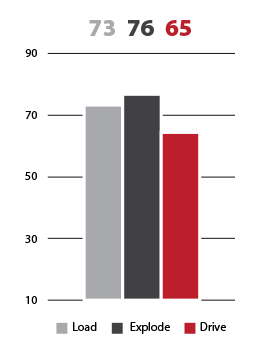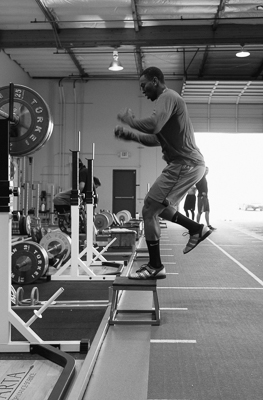
We often use the word explosive to describe good athletes. A popular way to actually quantify explosiveness is the Reactive Strength Index (RSI). This measurement describes an individual’s ability to to change quickly from an eccentric to concentric muscular contraction. What the test really evaluates is a quality we talk about quite a bit on the blog; stiffness. More specifically, it shows an athlete’s ability to maintain stiffness in their movement in a very short amount of time. RSI is calculated by dividing the height of a depth ( 25 cm drop) jump by the time spent on the ground. The higher the jump and shorter the ground contact time, the better the index. An athlete who excelled at this test would have a Sparta Signature like the one above, where EXPLODE is the highest, and LOAD is second highest. This signature is typical of what we’d see from a basketball center or wide receiver.

There are a couple problems with RSI as an evaluation, or goal for all athletes. The first is that it is difficult to calculate the jump height and ground contact time accurately, which would create an unreliable test. The second is that it over-emphasizes initial force creation (LOAD). The athletes who score best spend the least time generating their force early in the movement. In short, these would be the stiffest athletes, and we’ve already discussed how being too stiff can put an athlete at serious risk for knee injuries. The fact is, not all positions in all sports need this type of explosiveness and stiffness. It can be athletically impressive for a baseball player or offensive lineman to have that type of explosiveness but if it comes at the expense of being rotationally powerful, or being able to stand your ground, then we’ve lost sight of the real goal: to help athletes improve at their sport.
Instead of using the RSI we prefer to look a the ratio between LOAD and EXPLODE in our athletes Sparta Signature. We like to see an athlete posses the ability to be explosive without having a extreme (high) LOAD. In addition, we like to keep the t score for LOAD above 45 (and more than 15 below the next variable) to avoid the chance of patellofemoral issues.